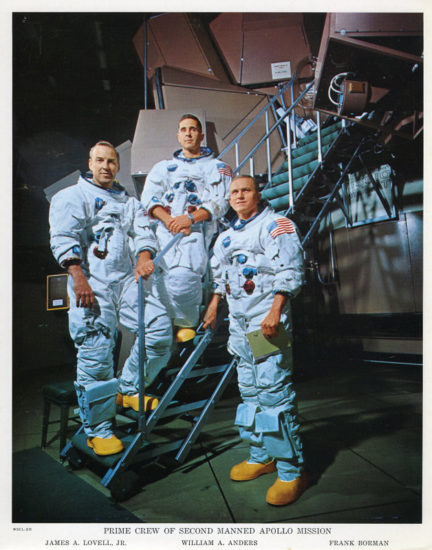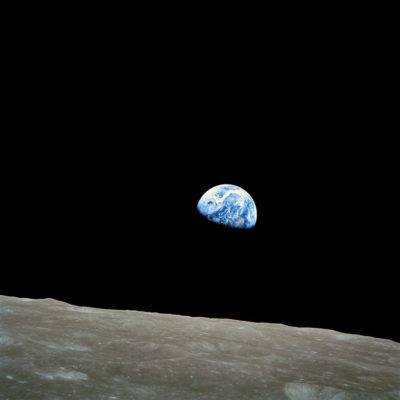
Not all great Christmas stories take place on Earth. One of the most ambitious and dangerous journeys ever undertaken saw America send three (very wise) men to orbit the Moon.
Back in 1968 it’s safe to say America was reeling with civil unrest and two particularly dreadful assassinations.
Both Martin Luther King and Bobby Kennedy had been brutally killed, there was racial tension and anti-Vietnam war protests all over the country.
Add to that the fact that the Russians looked ready to put a man on the Moon and it was safe to say. America needed something positive to come out of this tumultuous year.
The bosses at NASA decided on a brave move. They would send a crew further into space than any other human beings had gone before.
A 30% chance of success
Before you can land on the Moon, you actually have to get there (250,000 miles away). You have to prove that your space craft can make the journey . . . and return home.
This would be the first crewed spacecraft in history to orbit the Moon.
The mission was Apollo 8 and the crew were Commander Frank Borman, Jim Lovell (who would also travel on the ill-fated Apollo 13 mission) and rookie astronaut Bill Anders.
On December 21, 1968 Apollo 8 launched. Between themselves, the crew figured they would have a 30% chance of success.
Bill Anders had already written a letter to his wife in the event he didn’t make it home.
At about 55 hours and 40 minutes into the flight, and 13 hours before entering lunar orbit, the crew of Apollo 8 became the first humans to enter the gravitational sphere of influence of another celestial body.
In other words, the effect of the Moon’s gravitational force on Apollo 8 became stronger than that of the Earth. At the time it happened, Apollo 8 was 38,759 miles (62,377 km) from the Moon and had a speed of 3,990 ft/s (1,220 m/s) relative to the Moon.
At 64 hours into the flight, the crew began to prepare for Lunar Orbit Insertion.
The crew had to perform this manoeuvre perfectly. And due to orbital mechanics, they had to carry it out on the far side of the Moon, out of contact with the Earth.
“We’ll see you on the other side”
The astronauts were told at 68 hours that they were “Go” and Lovell replied, “We’ll see you on the other side”.
And for the first time in history, humans travelled behind the Moon and out of radio contact with the Earth.
When the spacecraft came out from behind the Moon for its fourth pass across the front, the crew witnessed an “Earthrise” in person for the first time in human history. Bill Anders grabbed the camera and took one of the most iconic photographs in human history.

Photograph by NASA.
As they rounded the Moon for the ninth time, the astronauts began the second television transmission.
Borman introduced the crew. Then each man gave his impression of the lunar surface, and what it was like to be orbiting the Moon.
Borman described it as being “a vast, lonely, forbidding expanse of nothing”. Then, after talking about what they were flying over, Anders said that the crew had a message for all those on Earth.
Each man on board read a section from the Book Of Genesis (you can listen to it here).
There is a Santa Claus
Borman finished the broadcast by wishing a Merry Christmas to everyone on Earth.
His message appeared to sum up the feelings that all three crewmen had from their vantage point in lunar orbit. Borman said, “And from the crew of Apollo 8, we close with good night, good luck, a Merry Christmas and God bless all of you—all of you on the good Earth.”
When voice contact was regained once again, Lovell announced, “Please be informed, there is a Santa Claus.”
A safe splashdown occurred on December 27th and the mission had been a great success.
The effect of Apollo 8 was summed up in a telegram from a stranger, received by Borman after the mission.
It stated simply, “Thank you Apollo 8. You saved 1968.”
For more space content, click here.
For more from the “Friend” team, read our blog here.




